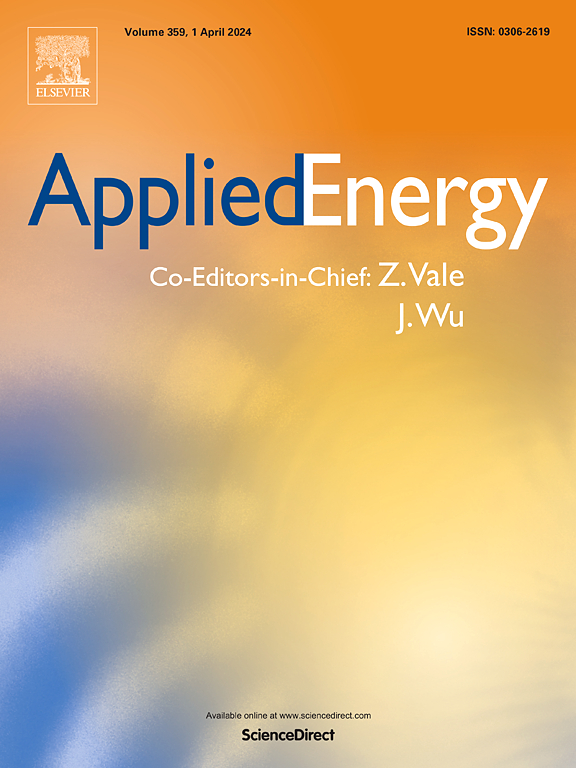A hybrid methodology for assessing hydropower plants under flexible operations: Leveraging experimental data and machine learning techniques
IF 10.1
1区 工程技术
Q1 ENERGY & FUELS
引用次数: 0
Abstract
In recent years, there's been a demand for more flexible hydropower to offset power fluctuations from intermittent renewables, leading to increased wear in turbines due to extended off-design operations and transients. The present paper proposes novel methods to analyze and assess experimental data of a hydropower plant for a better monitoring over time. Measurements are performed in a run-off-river plant with Francis turbines in Switzerland. During two experimental campaigns, high-frequency acquisitions up to 51.2 kHz are realized with more than 30 sensors while the SCADA data are collected at 10 Hz. In the physics-based analysis, statistical metrics and time-frequency decompositions are deployed to assess the operating conditions. To aggregate all information, the Vibrational Content Index is introduced, which unifies all sensors data by normalizing their frequency spectra with the Best Efficiency Point (BEP). This provides a single-value indicator of overall vibration, which is more sensitive than traditional metrics and easier to track over time. In the data-driven approach, the operating points are segmented into three clusters with distinct physical interpretations by applying dimensionality reduction algorithms with only two coded dimensions. This method correctly detects an abrupt change in the machine behavior for a slight power shift from to – due to full-load vortex self-excitation. Finally, the concept of virtual sensors is developed by corroborating the coded high-frequency experimental data with low-frequency SCADA using machine learning. The trained model uses SCADA data as input to estimate the sensors high-frequency response in real-time. This promising approach enables improved continuous monitoring without the need for permanent installations.
求助全文
约1分钟内获得全文
求助全文
来源期刊

Applied Energy
工程技术-工程:化工
CiteScore
21.20
自引率
10.70%
发文量
1830
审稿时长
41 days
期刊介绍:
Applied Energy serves as a platform for sharing innovations, research, development, and demonstrations in energy conversion, conservation, and sustainable energy systems. The journal covers topics such as optimal energy resource use, environmental pollutant mitigation, and energy process analysis. It welcomes original papers, review articles, technical notes, and letters to the editor. Authors are encouraged to submit manuscripts that bridge the gap between research, development, and implementation. The journal addresses a wide spectrum of topics, including fossil and renewable energy technologies, energy economics, and environmental impacts. Applied Energy also explores modeling and forecasting, conservation strategies, and the social and economic implications of energy policies, including climate change mitigation. It is complemented by the open-access journal Advances in Applied Energy.
 求助内容:
求助内容: 应助结果提醒方式:
应助结果提醒方式:


